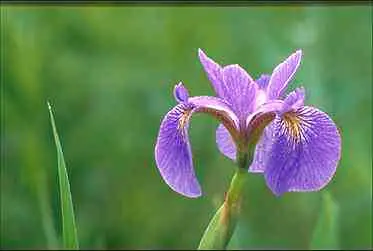Call it hardpan or caliche or adobe, but all these soils add up to is dense ground. And water doesn’t penetrate any better than it seeps through a red clay flower pot wall.
Such is the fate of so many homeowners in regions were soils, or subsoil layers are impervious to water. Or sometimes it’s just part of a homesite that’s problematic. Cut building pads on hillsides may offer nothing but these dense, exposed sub-soils. Even if you till them up and add organic matter, the soils may cement themselves back together again once you add water.
Many plants refuse to grow under these circumstances, but the good news is that some will literally thrive in heavy ground. A good many of these come from habitats around the world that are often flooded, swampy or perennially wet. Some will grow equally well on dry land too, because they are adapted to the ebb and flow of seasonal waterways. Knowing which species enjoy these conditions will save you money, dead plants and a lot of frustration.
Cardinal flower is Lobelia cardinalis, a perennial named for the vivid red flower spikes that bloom from July to September. They’re also known as hummingbird flowers due to their lure of these tiny American birds to copious nectar. It ranges from Canada to over most of the eastern U.S. in wetlands, swamps and streambanks. Plants reach two to four feet and are quite cold hardy. Recently breeders have crossed this plant with other lobelia species to create the Lobelia speciosa hybrids with varying flower color, but expect these to be a bit less cold hardy.
Water iris can be found across the globe with many species native to the American south. These were brought into cultivation and crossed over and over to produce what are today known as the Louisiana iris hybrids. Big, bold and resilient, with a resistance to mucky soils of the deep South, these beauties are the stellar performers of wet ground gardens. Explore the rainbow of truly astounding hybrids and more details on cultivation and purchase of these all-American iris at Zydeco Louisiana Iris Garden in New Orleans or online at http://www.zydecoirises.com/
Hailing from warmer climates come two outstanding wetland performers. The canna, beloved in Victorian gardens can be a water garden plant or grow on dry ground. Its double nature is a requirement of the Amazon region of its homeland. Dwarfs or full sized varieties offer a huge range of flower and leaf colors. The black and striped leaves are exceptional to look at even when out of bloom. The thick, fleshy roots may be left in ground all winter provided they don’t freeze, or they can be lifted and stored after the last frost.
Gorgeous white calla lilies, Zantedeschia aethiopica used in swanky flower arrangements and old time funerary bouquets are natives of Africa. Like the canna they live on riverbanks, thriving in periodic floods but during the long dry season they survive on dry land. The large white callas make outstanding garden plants in heavy clay soils where moisture is prevalent. Smaller forms with a wider range of flower colors are less resilient however, and may prove too fussy for some gardens.
The key to beautiful carefree gardens is selecting plants that are perfectly suited to the location, climate and soils. Rather than fighting a problem low spot by trying to raise it up, which is usually expensive and not always effective, try to work with nature. Choose plants that are naturally adapted to these conditions in the wild, because they will perform year after year without much help from you.
Whether you’re discovering natural dog training with Caesar Milan or natural horse training with Pat Pirelli, the very same approach can be applied to solving problems in gardens. Because we always find greater success and happiness when we work with nature, not against her.

